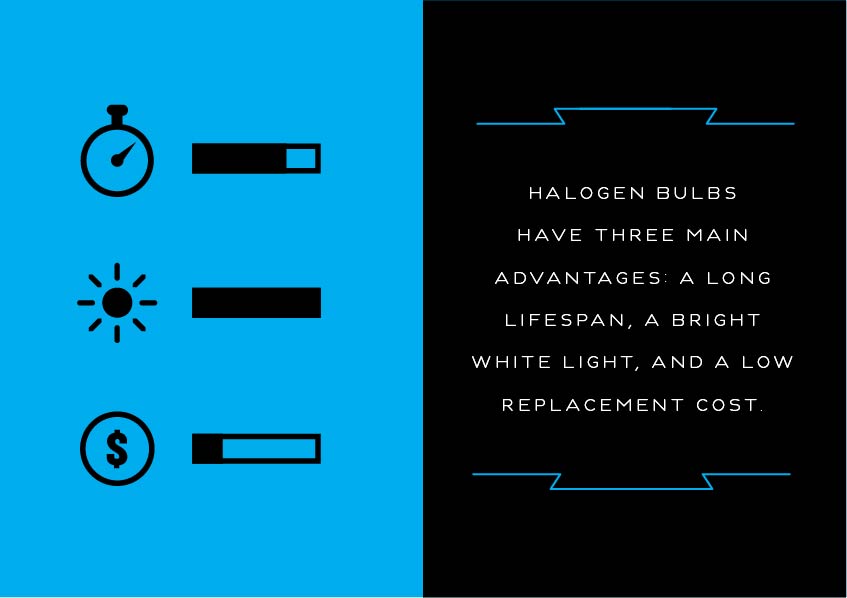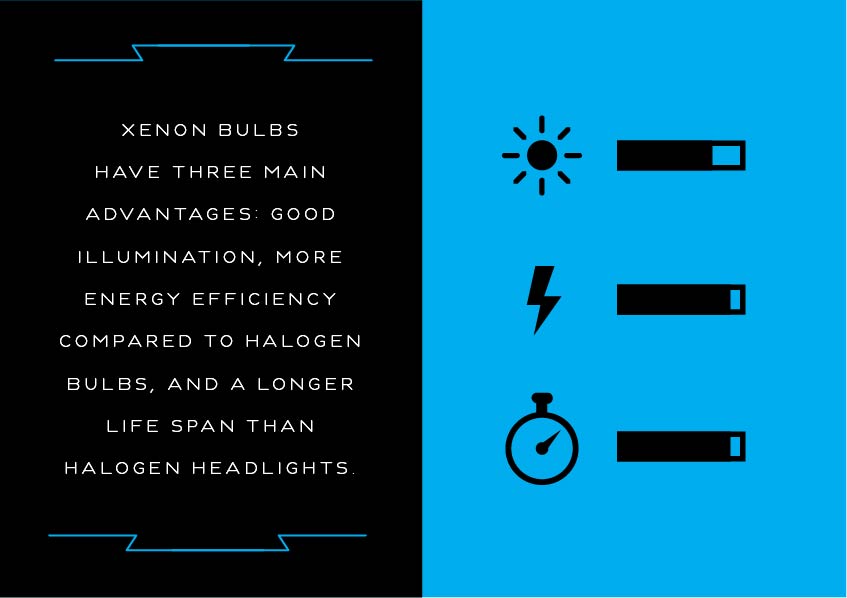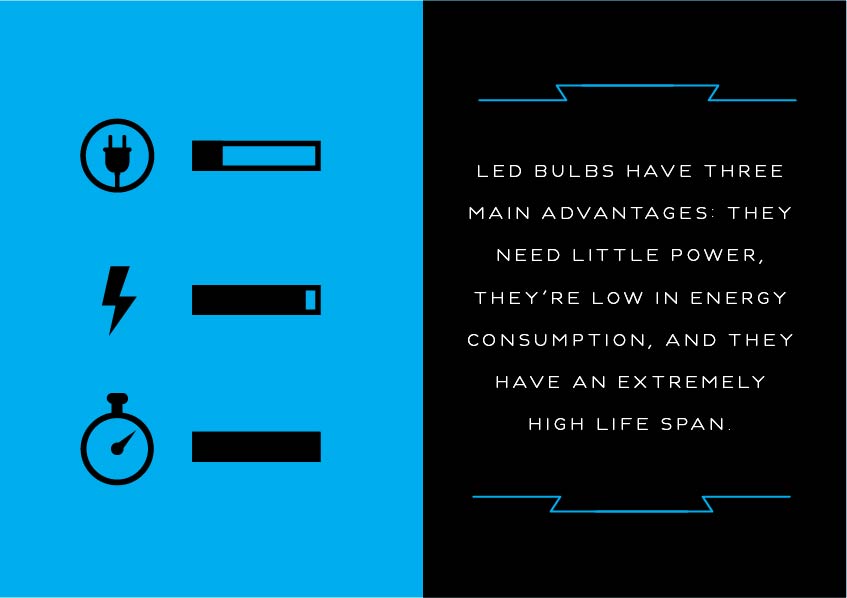
Halogen
Halogen headlights are the most popular type of headlights in vehicles. Halogen bulbs produce a bright, white light. The advantages of halogen bulbs are that they have a long lifespan, emit bright white light, and the replacement cost is low. The disadvantages to halogen bulbs are that they generate excessive heat and need to be replaced more often than HID and LED bulbs.

Xenon/HID
A xenon bulb, also known as an HID bulb, emits a white, clean light. The advantages of xenon bulbs are that they typically provide good illumination, are more efficient compared to halogen, and have a longer life span than halogen headlights. The disadvantage of these bulbs is that they are expensive and can cause a harsh glare to other drivers.

LED
LED bulbs emit an extremely bright white light and are known for lighting up the entire area surrounding the car as opposed to just the road ahead. The advantages of LED bulbs are that they need little power, are low and efficient in energy consumption, and they have an extremely high life span. The disadvantage to LED bulbs is that they are more expensive than halogen bulbs.

- Prior to using or installing any of these products always consult your vehicle’s owner’s manual for compatibility and warranty information.
- Always take appropriate safety precautions when working on or operating your vehicle. Take the necessary steps to help prevent injuries; always use protective gear like helmets, safety goggles, and gloves.


Don't miss out on new content
Thanks for signing up. Set your password and start earning reward points for everything you do on the site.
You already have a Team Valvoline account. Sign in here.
Did you forget your password?